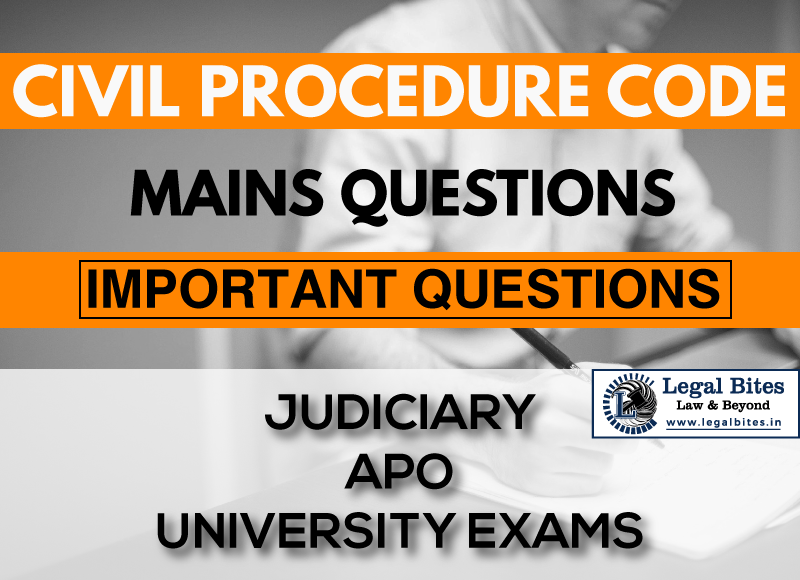Explain the Doctrine of Constructive res judicata.
Question: Explain the Doctrine of Constructive res judicata. Find the answer to the mains question only on Legal Bites. [Explain the Doctrine of Constructive res judicata.] Answer Rule of constructive res judicata is engrafted under Explanation IV of Section 11 of the Code. It is an artificial form of res judicata and provides that if a plea could… Read More »

Question: Explain the Doctrine of Constructive res judicata. Find the answer to the mains question only on Legal Bites. [Explain the Doctrine of Constructive res judicata.] Answer Rule of constructive res judicata is engrafted under Explanation IV of Section 11 of the Code. It is an artificial form of res judicata and provides that if a plea could have been taken by a party in a proceeding between him and his opponent, he should not be permitted to take that plea against the same party in...
Question: Explain the Doctrine of Constructive res judicata.
Find the answer to the mains question only on Legal Bites. [Explain the Doctrine of Constructive res judicata.]
Answer
Rule of constructive res judicata is engrafted under Explanation IV of Section 11 of the Code. It is an artificial form of res judicata and provides that if a plea could have been taken by a party in a proceeding between him and his opponent, he should not be permitted to take that plea against the same party in a subsequent proceeding with reference to the same subject-matter.
That clearly is opposed to considerations of public policy on which the doctrine of res judicata is based and would mean harassment and hardship to the opponent. Besides, if such a course is allowed to be adopted, the doctrine of finality of judgments pronounced by the courts would also be materially affected.
Thus, it helps in raising the bar of res judicata by suitably construing the general principle of subduing a cantankerous litigant. That is why this rule is called constructive res judicata, which, in reality, is an aspect or amplification of the general principle of res judicata.
State of U.P. v. Nawab Hussain, AIR 1977 SC 1680
A, a sub-inspector of police was dismissed from service by D.I.G. He challenged the order of dismissal by filing a writ petition in the high court on the ground that he was not afforded a reasonable opportunity of being heard before the passing of the order.
The contention was, however, negatived and the petition was dismissed. He then filed a suit and raised an additional ground that science he was appointed by the I.G.P., the D.I.G. had no power to dismiss him. The state contended that the suit was barred by constructive res judicata.
The trial court, appellate court, and the high court held that suit was not barred, but the Supreme Court held that the suit was barred by constructive res judicata as the plea was within the knowledge of the plaintiff and could well have been taken in the earlier writ petition.
Important Mains Questions Series for Judiciary, APO & University Exams
- CPC Mains Questions Series: Important Questions Part – I of X
- CPC Mains Questions Series: Important Questions Part – II of X
- CPC Mains Questions Series: Important Questions Part – III of X
- CPC Mains Questions Series: Important Questions Part – IV of X
- CPC Mains Questions Series: Important Questions Part – V of X
- CPC Mains Questions Series: Important Questions Part – VI of X
- CPC Mains Questions Series: Important Questions Part – VII of X
- CPC Mains Questions Series: Important Questions Part – VIII of X
- CPC Mains Questions Series: Important Questions Part – IX of X
- CPC Mains Questions Series: Important Questions Part – X of X
Admin Legal Bites
Legal Bites Study Materials correspond to what is taught in law schools and what is tested in competitive exams. It pledges to offer a competitive advantage, prepare for tests, and save a lot of money.

